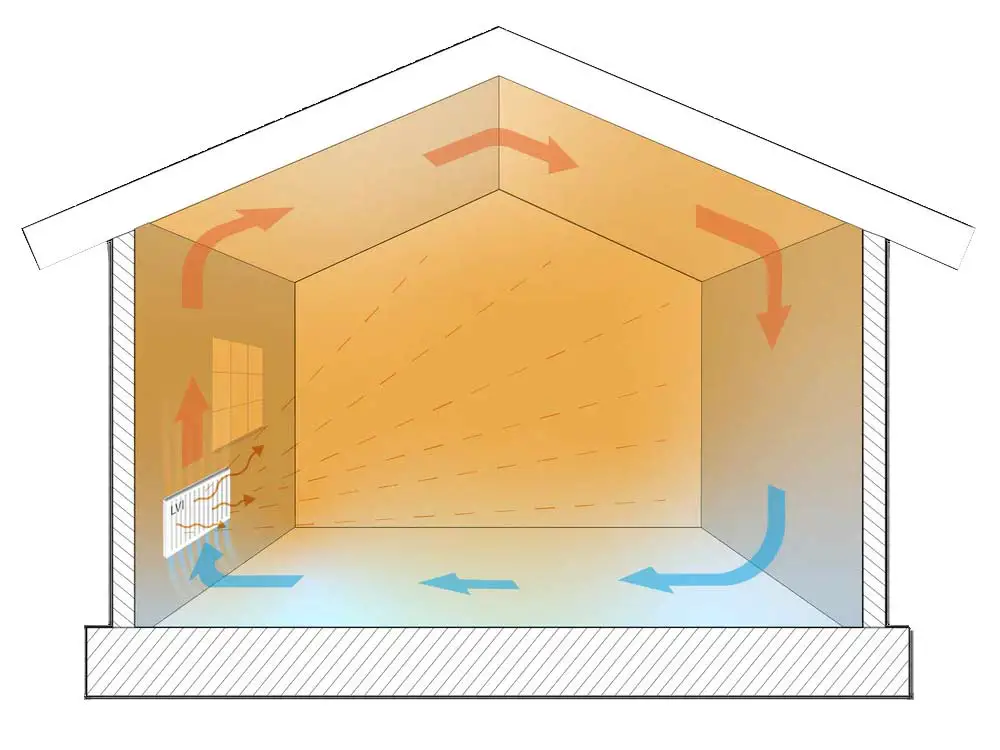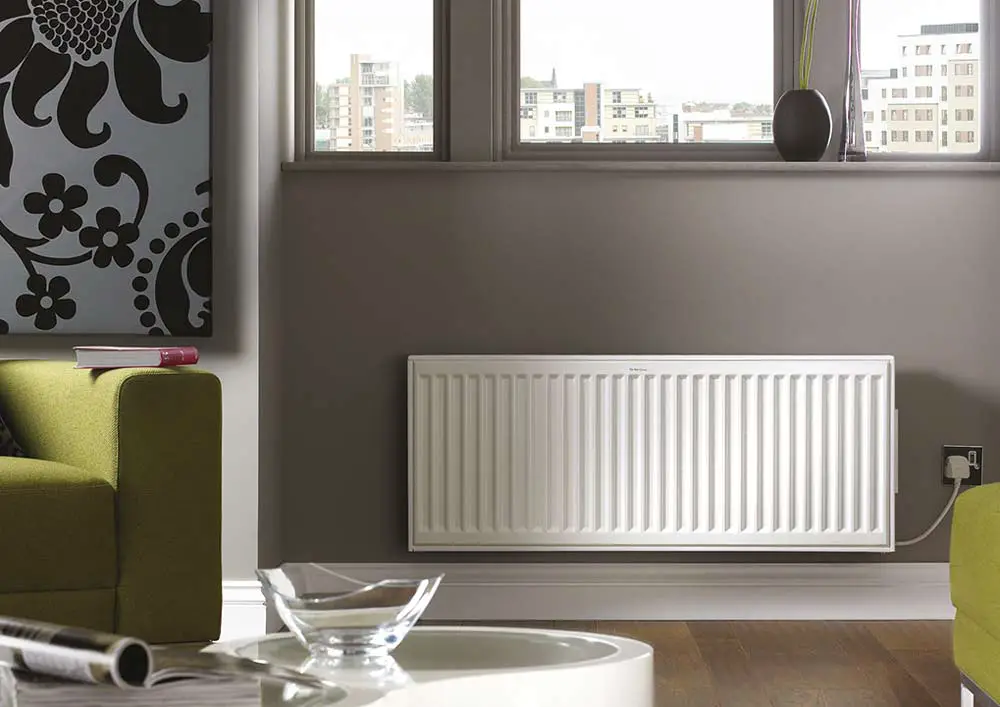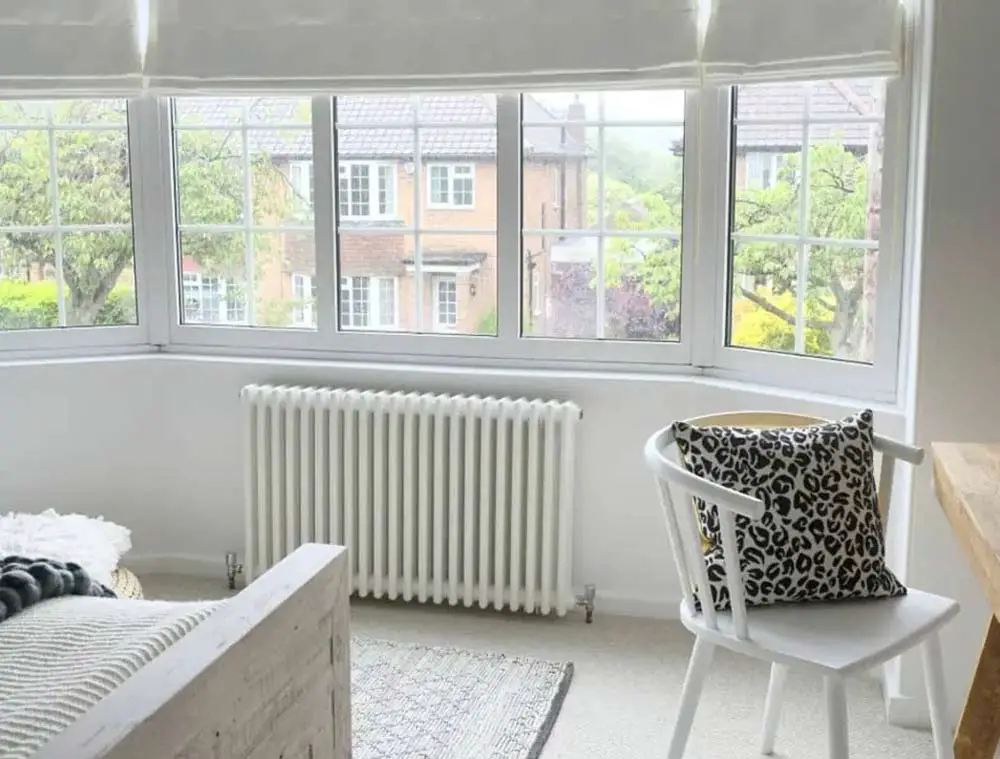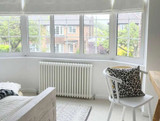Have you ever wondered why radiators are typically placed under windows in many homes? It might seem like an odd choice at first, but there's a method to this madness.
In this article, I'll offer some interesting reasons and science behind this common practice, and why it's a smart move in creating a cosy and warm home environment.
Heat Distribution and Battling the Cold
During cold winter months, the chilly outdoor air can seep through your windows, especially in older properties, reducing the temperature in your home. This is where your central heating system comes into play, as the radiators emit a flow of warm air that counteracts this. The question is, is underneath the window the best radiator placement for the most efficient result?
Well, although placing modern radiators under windows might seem particularly counterintuitive, as windows are typically the coldest area in most rooms, placing the radiator beneath the window serves a purpose beyond just heating the space.
Cold Air Sink Theory - A Quick Physics Lesson

Image credit: lvi-thermosoft.com.au
Remember those physics lessons from school where we learnt that hot air rises, while cold air sinks? This principle plays a significant role in where radiators are placed within our homes.
Cold air near the window descends due to the cold sink effect, creating a cool draft that will spread across the room. So placing the radiator under the window creates a barrier against this cold air, stopping it from progressing further.
The cold air also pushes against the hot air, helping to circulate it within the space, thus making the room warmer.
Optimal Use of Space and Aesthetic Appeal

Image credit: hvpmag.co.uk
Homes and the rooms within them come in various shapes and sizes, so utilising each unique space efficiently is crucial. Placing the radiator under a window makes the most of this often underutilised area, as some furniture is simply too large for that space and would block the view, whilst wall decor simply cannot be utilised.
So from an aesthetic point of view, if the radiator sits beneath the window, it allows for a clearer wall space elsewhere in the room making the radiator itself less obtrusive.
Efficient Windows and Insulation

Image credit: bestheating.com
You would be forgiven for thinking that modern double glazing stops cold air coming inside your home, however, although they are much better than in the past, they are still not perfect.
As energy-efficient as modern windows have become, they are still prone to being the weakest link in terms of insulating the room. Cold air can penetrate even the best of windows, making the radiator's heat output and strategic positioning just as essential as it always has.
To Conclude
The tradition of placing radiators under windows is not just a random choice. It's a smart and effective way to battle the cold, optimise heat distribution, and create a cosy, efficient, and aesthetically pleasing home.
So, the next time you feel the warmth of the radiator under the window, remember the physics and strategy behind this dynamic duo.
Frequently Asked Questions
1. Can I place radiators anywhere else in the room for the same effect ?
While radiators can be placed in different locations within a room, positioning them under the window is the ideal spot for countering the cold air sink effect and maximising heat distribution. It also leaves your other walls free of obstructions, allowing you to utilise these spaces for other things, like furniture or a TV unit.
2. Are there alternative heating methods that work well with windows ?
Yes, there are alternative heating methods, such as underfloor heating or wall-mounted radiators, that can be just as effective in combination with double or single glazed windows.
3. Should you cover the radiator with curtains ?
Floor-length curtains that fully cover the radiator can impact a radiator's efficiency, as they can block the heat from circulating freely around your room. Consider fitting shorter curtains that sit a couple of centimetres above the radiator top, or opt for a blind instead. This will allow the rising hot air to still do its job.
If you still wish to have floor-to-ceiling curtains, leave some space between the radiator and the window covering so that some hot air is still able to circulate.
4. How can I further enhance the efficiency of my radiator and windows ?
Regular maintenance of your radiators and ensuring your windows are properly sealed will enhance both the radiator's efficiency and the windows' performance.
5. Can I install radiators under any type of window ?
Yes, radiators can be installed under most types of windows. However, it's essential to consider the window's material, size, and placement to ensure optimal heat distribution.
6. Do radiators under windows cause condensation ?
Yes, placing a radiator directly under a window can cause condensation to form on the glass, due to the temperature difference between the warm radiator and the cold window surface.
As the radiator heats the air, it rises and comes into contact with the cooler window, causing the air to cool down rapidly. When cool air can no longer hold its moisture, condensation will form on the window surface.
Proper ventilation and insulation can help minimise condensation, ensuring a comfortable and moisture-free living space. Regularly checking and maintaining your windows can also reduce the potential for condensation-related issues.



 Author: Matthew Chiappini
Author: Matthew Chiappini